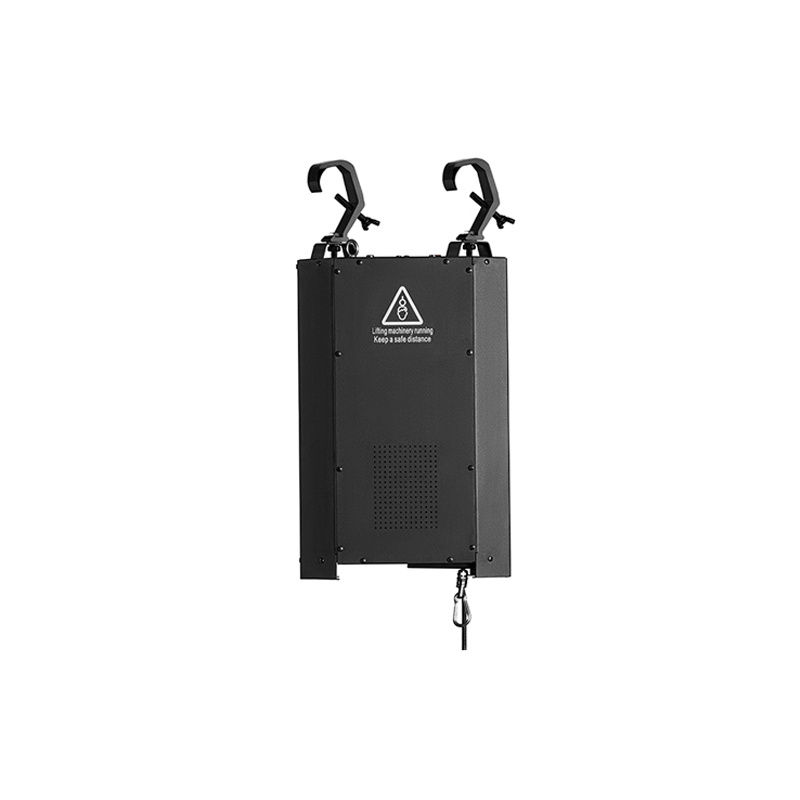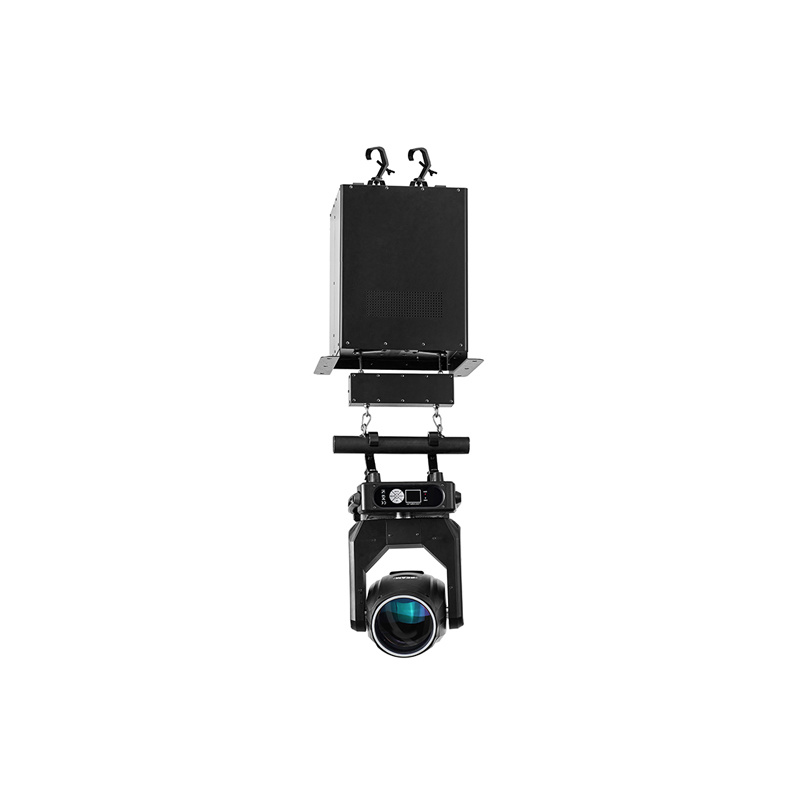DMX Controlled Winch for Stage & Lighting | Precision Kinetic Control
Classification:
summary description]
In today’s fast-paced entertainment world, precision and motion are no longer luxuries — they’re essential. Whether you're producing a high-energy concert or designing a captivating art installation, a DMX controlled winch can give your stage or venue a serious edge. These motorized lifting systems integrate directly with DMX512, enabling precise movement of lighting elements and kinetic decor in sync with your show’s rhythm.
Let’s break it down.
What Exactly Is a DMX Controlled Winch?
At its core, a DMX controlled winch is a motorized hoist that responds to DMX signals — the same control language used for moving lights, strobes, and effects. Unlike manual or simple motorized winches, this system lets you program every lift, drop, and pause with exact timing. You can control multiple winches simultaneously from a lighting console, opening the door to stunning, synchronized motion effects.
This isn’t just a backstage gadget. It’s a creative tool.
Why Use a DMX Winch?
1. It Moves with Precision
From gentle floating to sharp vertical drops, DMX winches give you complete control over motion. Movements are accurate, repeatable, and timed down to the frame, perfect for tightly choreographed productions.
2. Fluid Speed Control
Need a slow reveal? A fast punch of movement? No problem. These winches support adjustable speeds, so you can shift from delicate transitions to high-energy effects without missing a beat.
3. Safe Load Handling
Top-tier DMX winches are built with safety in mind. With load sensors, braking systems, and emergency stops, you’re not just getting motion — you’re getting reliable, secure performance night after night.
4. It Frees Your Creativity
Picture this: dozens of LED balls rising and falling in sync with your music. Or an entire ceiling of light tubes undulating like waves. With DMX winches, that’s not fantasy — it's programmable.
Where Are DMX Controlled Winches Used?
Concerts and Touring Shows
One of the most common uses is in kinetic light shows — think of floating spheres, LED rings, or mirrored elements moving in harmony with the beat. Visually stunning and fully automated.
Theater Productions
Stage designers use DMX winches to shift scenery, props, and lighting setups quietly and smoothly, without disrupting the flow of the performance.
Nightclubs and DJ Events
You’ll often see kinetic installations in clubs — lights that move, drop, and rise above the dance floor, building intensity as the night unfolds.
Art Installations and Museums
DMX winches are a favorite in interactive exhibits. They add motion to visual art, turning static spaces into immersive environments that evolve.
How to Choose the Right DMX Winch
Before buying or installing a DMX-controlled winch, think about your project’s specific needs. Ask yourself:
- How heavy is the object you’re lifting? Make sure the winch’s load capacity matches your fixture.
- How much travel do you need? Different winches offer different vertical ranges.
- Do you need speed variation? Some scenes call for slow elegance, others demand fast transitions.
- What’s your DMX setup? Know how many channels your controller supports and ensure compatibility.
- Where will it be installed? Ceiling height, rigging space, and safety clearances matter.
Plug-and-Play with Your Lighting System
Most DMX winches are designed to integrate seamlessly with professional lighting consoles — from grandMA to Avolites. Once you assign a DMX address, you can control the winch just like a moving head or strobe. You can even program advanced motion profiles or sync the winch to music or timecode for multimedia coordination.

Safety First
As with any stage rigging system, safety is non-negotiable. DMX winches often include built-in features like:
- Position feedback for real-time accuracy
- Braking systems to prevent free-fall
- Overload detection to stop the operation if limits are exceeded
- Emergency shutdowns for quick response
Make sure your crew understands how to operate and maintain the system. Regular inspection is a must.
Why DMX Controlled Winches Are Changing the Game
DMX winches do more than lift and lower — they breathe life into your lighting design. With a few keystrokes, you can transform your stage from static to kinetic. What used to take a team of stagehands can now be done from one controller, in perfect sync with your show’s lighting and audio.
For professionals looking to push visual storytelling further, this technology offers a new level of flexibility and wow factor.
Final Thoughts
The DMX controlled winch is no longer a specialty item for elite productions. It's becoming standard equipment in concerts, clubs, theaters, and even art galleries. As motion becomes an expected part of the audience experience, having programmable lifting control gives you a powerful creative tool.
It’s not just about moving objects — it’s about moving your audience.
Frequently Asked Questions
1. Are DMX winches compatible with wireless DMX systems?
Yes. Some modern winches support wireless DMX, allowing for cleaner setups without extensive cabling.
2. What’s the average load capacity of a DMX winch?
Models vary, but common units handle anywhere from 3 kg to 100 kg, depending on application and safety factors.
3. Can a DMX winch run 24/7 in permanent installations?
Yes, if it’s built for continuous duty. Look for industrial-grade motors and check the duty cycle rating.
4. Do DMX winches require a dedicated DMX controller?
Not necessarily. Many can be integrated into your existing DMX system or lighting software.
5. What’s the maintenance requirement?
Typically, regular visual inspections, lubrication, and periodic load testing are needed, just like any stage rigging gear.
More Cases


